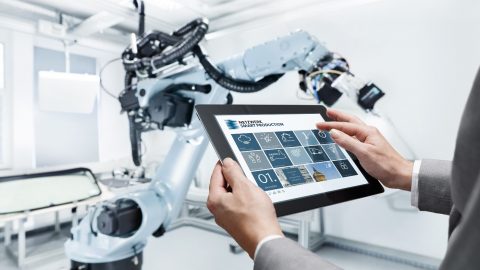
Schneider Electric, a European multinational company specializes in providing hardware automation solutions, software and energy management services. Patrick Lamboley – Chairman of the ISO / TC 184 Technical Committee of the company shared some of the most important factors affecting the application of smart manufacturing in businesses.
We all have more or less known robot applications that are extremely user friendly, multi-functional and work efficiently. From self-taught robots at Google, which help with keyword searches to Flippy, burgers at a restaurant in California, or Pepper, humanoid robots at SoftBank Robotics can recognize the emotions of human, etc. Whether in service, commerce or in the manufacturing process, robots play a very important role. Robots are also one of the indispensable platforms in smart manufacturing.
Besides robots, artificial intelligence (AI), the Internet of Things (IoT), measurement and 3D printing are also technologies that play the role of connecting physical and digital elements. The IoT will allow people to focus more on manufacturing jobs by eliminating unnecessary reporting of activities. In addition, IoT combined with smart manufacturing technology will help to optimize processes, manage data information of production and business activities, and make information security easier. The sensors used to collect data in IoT can also serve to measure and design 3D printed models. Artificial intelligence, meanwhile, assists users in processing and analyzing the vast amount of data received from sensors in real time.
Although there is great potential for development, the application of smart production for businesses is not simple. “The biggest challenge is digital management,” Patrick Lamboley said. Today, the largest and most profitable companies in the world no longer just focus on what they produce. The focus is now often shifted to management and the technologies and software used to support management. On the intelligent production side, data-driven management activities will directly affect the operability of the entire process.”
Applying smart production also means converting a large amount of labor force to automation. This often faces many barriers within the organization. As mentioned above, the entire smart manufacturing process is operated and coordinated via machines or automatically set up from the beginning. Therefore, to manage quality productivity, firstly, enterprises need to have a platform of digital equipment and well-trained operating staff. This also causes many difficulties for businesses that have just started to apply. Solutions to help businesses easier access to smart production will be introduced in the next part of the series.
Productivity and Quality Office